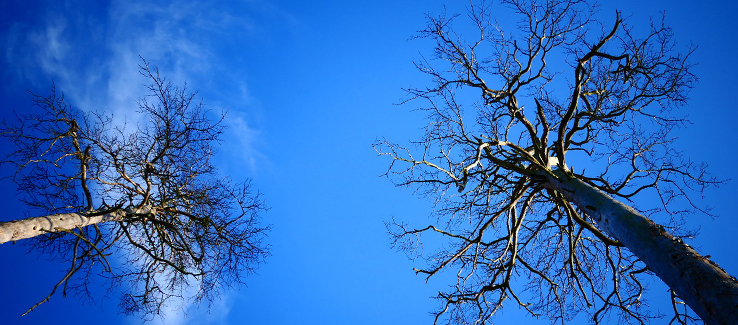How To Tell If My Tree Is Dead
Prevent catastrophic damage and injury resulting from a fallen dead tree. Knowing how to determine whether your tree is dead or not will help you make informed decisions on what to do before it can cause mayhem.
fasttreeremovalatlanta.com gathered information on identifying when a tree is dead, when one is in decline, and how to handle it.
Identifying a Dead Tree
Trees germinate, grow, mature, and eventually die. Here are several ways to identify a dead tree:
Visual Inspection – Walk around the tree, looking closely. If your tree has no foliage, blooms, nor buds, your tree may be dead. To make an informed determination, use a combination of tests and evaluations.
Branch Bending – Bend a few smaller branches to see if they crack or snap. If they break without arching/bending, the branch is dead. If multiple branches are dead, the tree may already be completely dead.
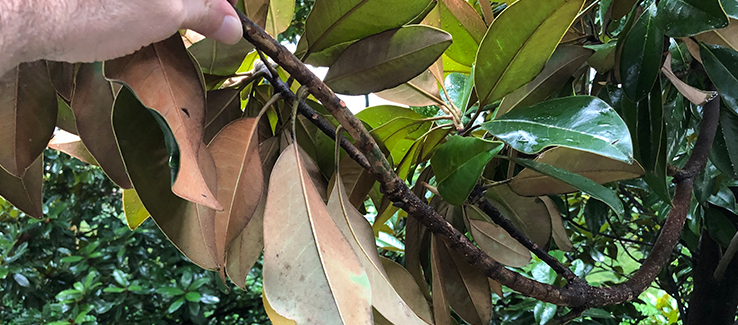
The Scratch Test – This quick test will give you a pretty clear idea of your tree’s state: Use your fingernail, screwdriver, or a pocket knife to scratch one of the tree’s twigs or branches (scratch off just enough to see the cambium layer, avoid making any deep wounds). If it’s moist and green under the bark, your tree is alive.
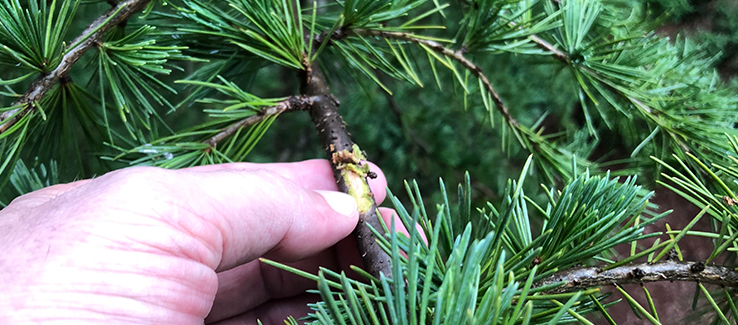
If it’s brown and brittle, your tree may be dead. Collect samples in multiple areas around the crown to confirm your findings.
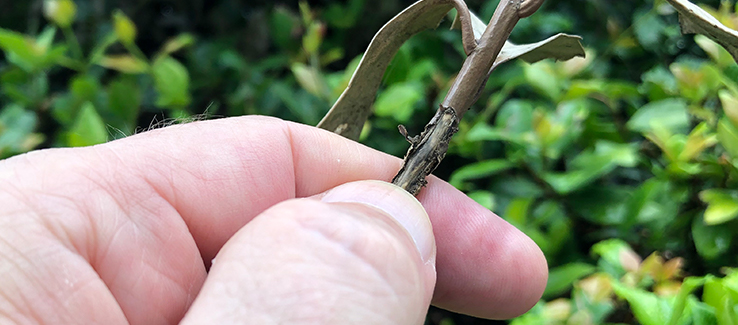
Tip: Before declaring that your tree has died, call a professional tree service to confirm or deny your suspicions and recommend what actions to take.
Signs of a Declining or Dead Tree
You may believe it’s easy to identify whether a standing tree is living or dead (and it often is). However, trees will sometimes appear to be healthy and thriving when they are not. Consider the following:
Tree Foliage – The first signs of trouble often manifest themselves through the foliage, and it differs for evergreen and deciduous species:
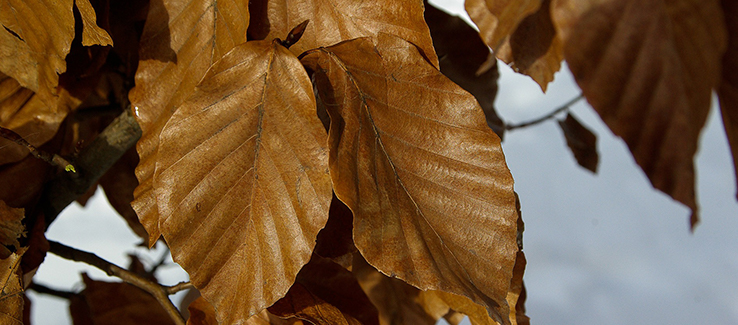
- Deciduous Tree Species in Spring and Summer – Some deciduous tree species are slow to leaf out for the growing season, but if your tree does not have any leaves by August, your tree has a significant problem.
- Deciduous Tree Species in Winter – A diagnosis can be difficult in winter, but it can be done. While your tree may be leafless, there should be buds set from the previous growing season. These buds will appear as “dots” along the ends of branches, and the absence of these buds may indicate that your tree is dead.
- Evergreen Tree Species All Year – Unlike deciduous species, your evergreen trees typically cycle through their foliage throughout the entire year. Leaves and needles usually fall from within the shaded portion of the canopy first. If you notice leaves or needles turning brown at the ends of the branches first, your evergreen may be in severe decline.
- All Species – Upon death, trees may suffer complete defoliation. In fact, any irregularities in the appearance, growth, or loss of a tree’s foliage should be immediately investigated.
Note: It is not uncommon for a dead tree’s foliage to quickly wilt or droop, then slowly change from green to yellow and finally brown before falling off.
Tip: Have any tree exhibiting brown leaves or needles in the summer inspected by a professional tree service. For deciduous trees, don’t confuse fall color change in late summer or early fall for signs of a dying tree (these occurrences may appear identical).
Tree Branches – Older trees are likely to have random dead branches and are a completely normal occurrence. However, if your tree is stressed, in decline, or dead, you may observe the following:
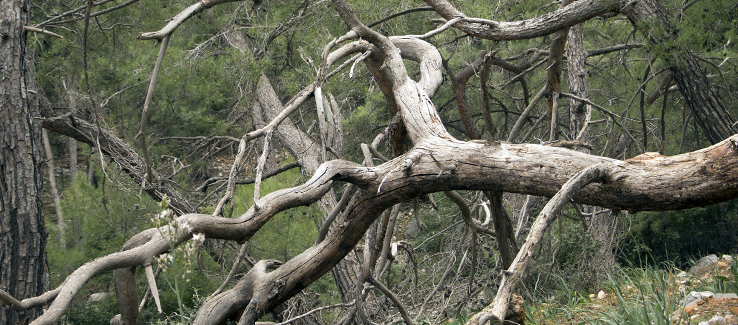
- Multiple large dead branches spread through the canopy
- Large areas of dead branches in the canopy
- Sudden branch drop as the canopy withers
Note: Older, more mature trees are expected to have occasional dead branches in their canopy. This is part of a tree’s lifecycle.
Tip: Sometimes, a tree will isolate (compartmentalize) damaged, diseased, or infested branches. This process may cause branches to fall after mimicking the above symptoms.
Read about handling dead tree branches in our article – Will Cutting Off Dead Branches Help My Tree?
Tree Trunk – Some signs indicating that a tree is dying or already dead may show up on the tree’s trunk. These signs may include:
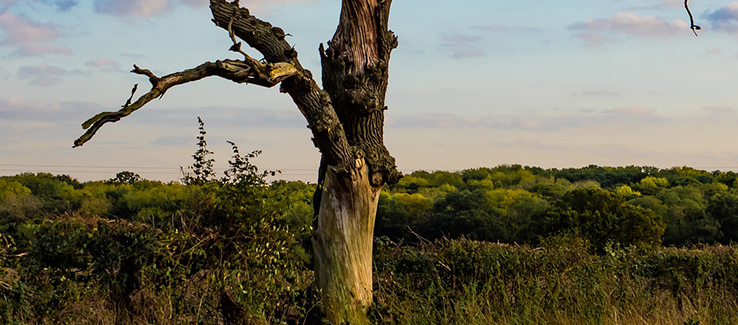
- Rot (disease), especially when present around the circumference of the trunk
- Sloughing or peeling sections of bark (this is common for select species)
- Open, gaping holes seemingly hollowing out your tree. (vectors for disease and infestation)
Note: While a hollowed-out tree trunk may appear ominous and provoke you to strongly consider removal, it is not necessarily killing your tree. Such a tree can still thrive and maintain its structure, even with a hollow center. Trees with this condition should be closely monitored and cared for.
Tree Roots – You can identify multiple issues by what you observe on or near the root flare and the root plate of your tree. The following signs require immediate professional attention:
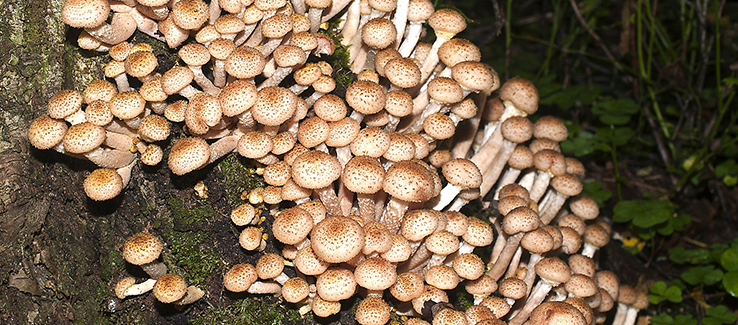
- Large groups of mushrooms growing on the root flare (where the trunk transforms into roots and penetrates the ground)
- Mushrooms growing from or around surface roots
- Suckers growing from the base of the trunk or from roots around the tree
- Surface roots pulling away or being pulled away from the soil, destabilizing the tree
Note: For mushrooms to flourish and display their conks (fruiting structures), they require a significant amount of decaying organic matter. In the case of mushrooms on trees, once they appear (especially on roots, the root flare, or the base of the tree), your tree should be evaluated by a professional and strongly considered for removal.
Tip: While there are many reasons you might call on a professional tree service, special attention should be given to trees that suddenly lean or that develop mushrooms near the base or roots. Both indicate a potential case of severe root rot and – for safety reasons – must be dealt with immediately.
Is My Tree Dead?
In this article, you discovered how to determine when a tree is dead, in decline, and what to do when your tree is in trouble.
The ability to determine when your tree has died will help you take swift action to prevent the spread of disease, infestation, and potential destabilization of your tree.
Ignoring the signs that your tree has died can result in catastrophic damages or severe physical injuries when it suddenly falls or topples during a storm.
Sources:
ucanr.edu
ucanr.edu/sites/ucmgplacer/files/178860.pdf
extension.unl.edu/statewide/buffalo/Detecting%20Winter%20Kill%20July%2018%202015.pdf
extension.oregonstate.edu/news/how-examine-deciduous-tree-leaf-out-problems
(404) 220-9965
(404) 220-9963

